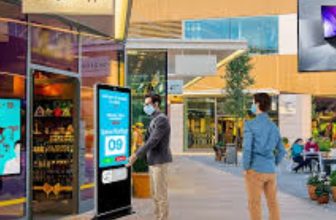
Digital advertising, on internet and mobile gadgets, has outpaced the traditional media advertising and for the first time in 2013 generated more advertising spending than television advertising. Digital advertising is believed to be an effective way to better target potential customers in the global market. Evidence shows that businesses have increasingly switched their advertising focus from traditional to digital media. This research uses an empirical study that explores the effectiveness of digital advertising vs. traditional media advertising along several mass marketing dimensions. The results reveal that while traditional media advertising still holds its ground, digital advertising offers more effectiveness for promoting companies’ products. The results suggest that marketers need to use more digital advertising in order to better target their customers, particularly the young consumers.
Digital advertising, on internet and mobile gadgets, has outpaced the traditional media advertising and for the first
time in 2013 generated more advertising spending than television advertising. Digital advertising is believed to be an
effective way to better target potential customers in the global market. Evidence shows that businesses have
increasingly switched their advertising focus from traditional to digital media. This research uses an empirical study
that explores the effectiveness of digital advertising vs. traditional media advertising along several mass marketing
dimensions. The results reveal that while traditional media advertising still holds its ground, digital advertising offers
more effectiveness for promoting companies’ products. The results suggest that marketers need to use more digital
advertising in order to better target their customers, particularly the young consumers.
Digital advertising, on internet and mobile gadgets, has outpaced the traditional media advertising and for the first
time in 2013 generated more advertising spending than television advertising. Digital advertising is believed to be an
effective way to better target potential customers in the global market. Evidence shows that businesses have
increasingly switched their advertising focus from traditional to digital media. This research uses an empirical study
that explores the effectiveness of digital advertising vs. traditional media advertising along several mass marketing
dimensions. The results reveal that while traditional media advertising still holds its ground, digital advertising offers
more effectiveness for promoting companies’ products. The results suggest that marketers need to use more digital
advertising in order to better target their customers, particularly the young consumers.
Digital advertising, on internet and mobile gadgets, has outpaced the traditional media advertising and for the first
time in 2013 generated more advertising spending than television advertising. Digital advertising is believed to be an
effective way to better target potential customers in the global market. Evidence shows that businesses have
increasingly switched their advertising focus from traditional to digital media. This research uses an empirical study
that explores the effectiveness of digital advertising vs. traditional media advertising along several mass marketing
dimensions. The results reveal that while traditional media advertising still holds its ground, digital advertising offers
more effectiveness for promoting companies’ products. The results suggest that marketers need to use more digital
advertising in order to better target their customers, particularly the young consumers.
Digital advertising, on internet and mobile gadgets, has outpaced the traditional media advertising and for the first
time in 2013 generated more advertising spending than television advertising. Digital advertising is believed to be an
effective way to better target potential customers in the global market. Evidence shows that businesses have
increasingly switched their advertising focus from traditional to digital media. This research uses an empirical study
that explores the effectiveness of digital advertising vs. traditional media advertising along several mass marketing
dimensions. The results reveal that while traditional media advertising still holds its ground, digital advertising offers
more effectiveness for promoting companies’ products. The results suggest that marketers need to use more digital
advertising in order to better target their customers, particularly the young consumers.
How to combine edge and cloud computing for powerful digital signage networks
Hey there, digital signage integrators! You’ve probably heard all about cloud computing and its potential to expand the capabilities and functionalities of signage networks.
But don’t forget about edge computing! Understanding how these two technologies can work together to provide better and more reliable services to your customers is essential.
Cloud + edge computing: a winning combination
You might think cloud and edge computing are mutually exclusive, but they are not. Many corporations have found that combining both types of networks can lead to more efficient outcomes.
For example, a digital signage network may use cloud computing for content management and analytics while relying on edge computing for real-time data processing and display rendering.
Over the past 15 years, cloud computing has evolved significantly, giving rise to various forms like sovereign, local, and micro clouds. Meanwhile, edge computing has regained relevance over the last five years, primarily due to the growth and development of IoT applications.
Perks for Digital Signage
A. Beef up your security
Sure, public cloud providers like Google Cloud, Microsoft Azure and AWS offer robust cybersecurity solutions, but edge computing can serve as an extra line of defense. With a robust edge system, you can reduce the number of threats reaching your customers’ central cloud locations. Edge computing filters and processes data locally before sending it to the central cloud, minimizing data breaches or unauthorized access risks.
B. Cut down on latency
Nobody likes waiting. Minimizing latency is crucial for digital signage, especially with the rise of digital out-of-home advertising.
Advertisers expect their content to be displayed promptly and accurately. Live streaming events and interactive displays may require latencies below 100 milliseconds for an optimal user experience.
By incorporating edge computing close to the source of information, you can reduce latency and ensure content is displayed as intended.
This is particularly valuable in situations with limited or unstable internet connectivity, where edge devices can provide a more reliable playback experience.
C. Backup and redundancy are your friends
In the world of computing, redundancy is essential. A backup at the edge can help digital signage networks operate as expected, even when things go wrong. For instance, edge devices can continue playing cached content during a significant server outage, ensuring minimal disruption to the user experience.
D. Broaden Your Field of Operation
Data analytics is becoming increasingly important in digital signage, mainly as more companies invest in programmatic advertising. Industries like retail, transportation, and public safety are seeing the value of data-driven digital signage for enhancing customer engagement and operational efficiency.
Robust edge computing systems facilitate faster data processing and decision-making by aggregating data from multiple edge sensors and devices, such as cameras and environmental sensors.
Machine learning technologies can analyze this data, discard irrelevant information, and send valuable insights to centralized cloud locations for further analysis and decision-making.






